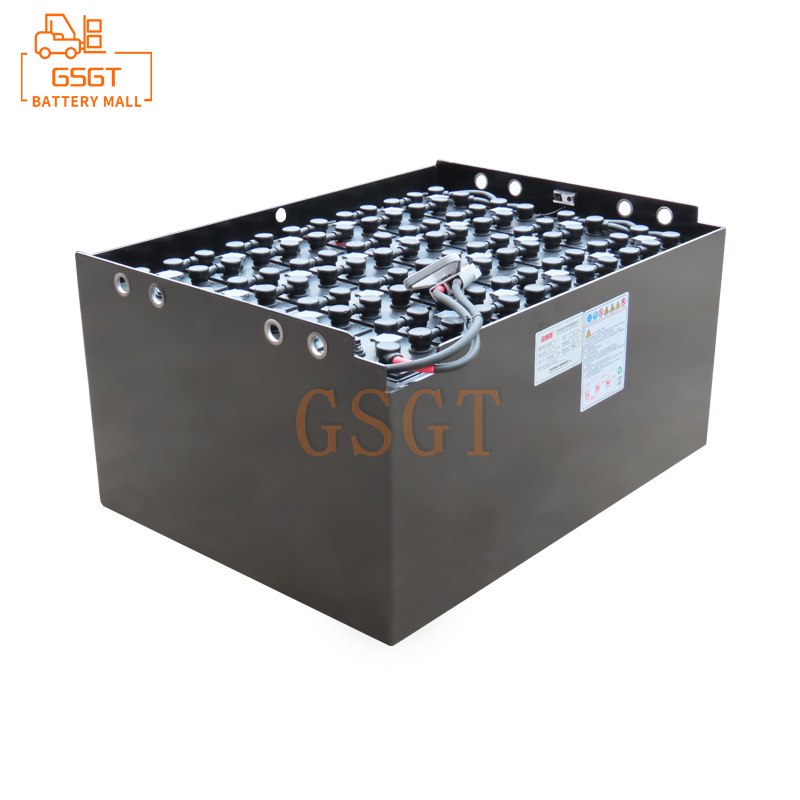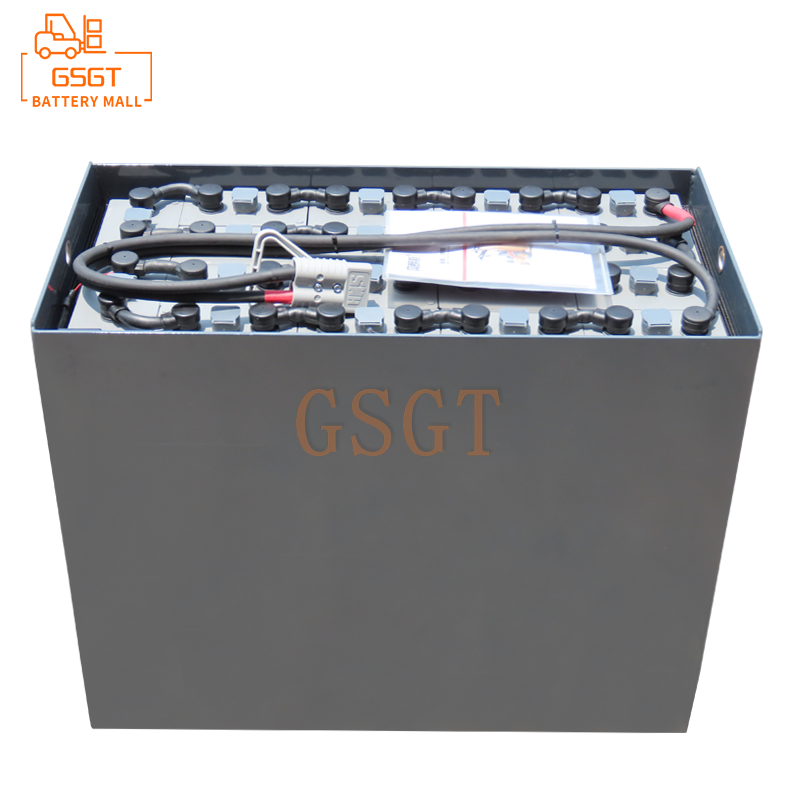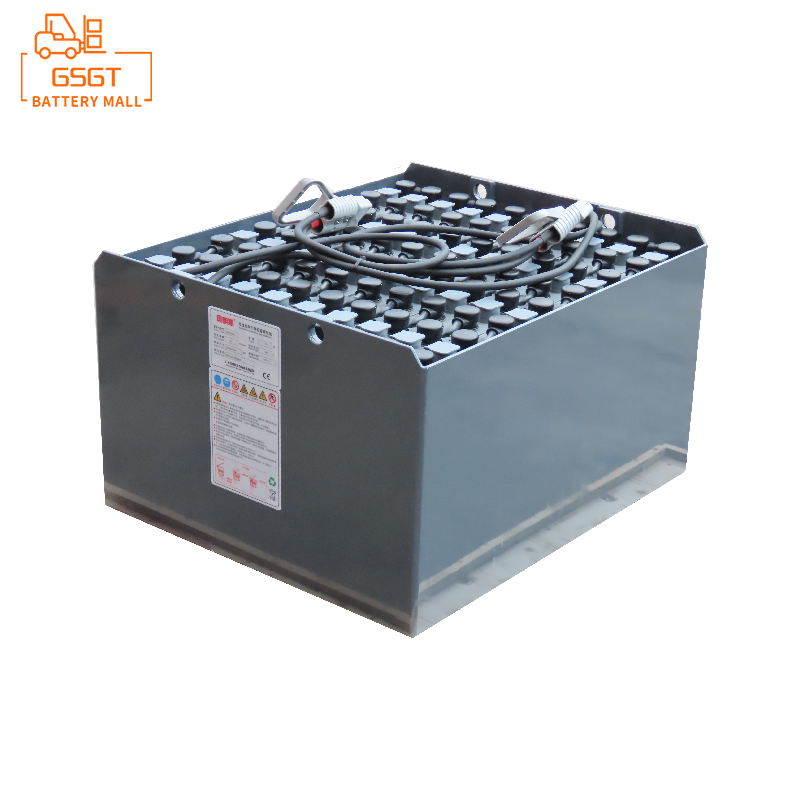Time:2025-07-15 10:44:31
Browse:623
For forklift operators, lead-acid batteries are the "heart" that ensures the normal operation of forklifts. Once the battery malfunctions, it will not only affect work efficiency but also may cause safety hazards. In fact, even beginners can complete basic self-checks for faults as long as they master the correct methods. Below, we will provide a detailed introduction to the self-check steps for lead-acid batteries in forklifts, allowing you to easily identify common problems.
Safety prerequisites before self-inspection
Before starting a self-check, safety always comes first. First of all, make sure the forklift is turned off, pull the handbrake and place the gearshift lever in neutral. Secondly, prepare insulating gloves, goggles and insulating wrenches and other tools to avoid direct contact with the internal substances of the battery. In addition, check whether the working area is well-ventilated and kept away from open flames and heat sources - lead-acid batteries produce hydrogen during charging and discharging, which may cause an explosion when exposed to fire. Finally, if electrolyte leakage is found on the battery surface, it is necessary to first rinse it with baking soda water (neutralize the acidity), then wipe it clean with a dry cloth before conducting an inspection.
Step-by-step self-inspection process
Step 1: Visual inspection
Novices can first determine whether the battery has obvious faults by "looking".
Observe the casing: Check if the battery casing has any cracks, bulges or deformations. If the shell cracks, the electrolyte may leak, resulting in a decrease in battery capacity. Swelling is often caused by overcharging or high-temperature environments, which can affect battery life.
Check the terminals: The terminals are the key parts for current conduction. It is necessary to check whether there is white or green corrosion. Corrosion can lead to poor contact, which is manifested as difficulty in starting the forklift or sudden power failure during driving. If corrosion is detected, first disconnect the battery connection wires, rinse with hot water, dry it, and then apply Vaseline to prevent further corrosion.
Check the liquid level (for maintainable batteries) : Some lead-acid batteries are equipped with transparent liquid level Windows or openable filling caps. Under normal circumstances, the electrolyte should submerge the plates by 1-2cm. If the liquid level is lower than the plates, it will cause sulfation of the battery and shorten its service life. If the liquid level is insufficient, distilled water should be added (tap water or electrolyte is not allowed).
Step 2: Voltage test to determine the power status
Voltage is an important indicator reflecting the state of a battery. Novices can use a multimeter to complete the test (the DC voltage range needs to be selected, and the measurement range should be set to 0-20V).
Static voltage test: When the battery has been idle for more than 2 hours (or in an unused state), connect the red test lead to the positive terminal and the black test lead to the negative terminal. The normal voltage should be between 12.4 and 12.7V (for a single 12V battery). If it is lower than 12.4V, it indicates that the battery is undercharged. If it is below 12V, there may be problems such as sulfation of the plates or capacity attenuation.
Load voltage test: Start the forklift (or connect the load such as the headlight) and test the voltage at this time. Under normal circumstances, the load voltage should not be lower than 10.5V (for a single battery). If the voltage drops sharply under load, it may be due to excessive internal resistance of the battery, which cannot provide a continuous current. Further inspection of the battery capacity is required.
Step 3: Simple capacity assessment
Insufficient capacity will lead to a shortened range of forklifts. Novices can make a preliminary judgment through the following methods:
Driving test: After a full charge, record the driving range of the forklift under normal operation. If the battery life is significantly shortened compared to before (for example, it used to work for 4 hours but now only works for 2 hours), it indicates that the battery capacity has dropped sharply.
Discharge test: Use a dedicated discharge instrument (novices can ask maintenance personnel for assistance), and set the discharge current to 1/10 of the battery's rated capacity (for example, discharge a 100Ah battery with a current of 10A). If the discharge time is less than 80% of the rated capacity (for example, a 100Ah battery is discharged for less than 8 hours), the battery capacity does not meet the standard and maintenance or replacement should be considered.
Frequently Asked Questions
Question: There is liquid seeping out from the battery surface. Could it be a leakage?
Answer: Not necessarily. The liquid on the battery surface may be electrolyte leakage, condensation water or other splashed liquids. You can first test with pH paper. If the paper turns red (acidic), it indicates that the electrolyte is leaking. You need to stop using it immediately and replace the battery. If there is no change in the test strip, wipe it dry and continue to observe. Leakage is mostly caused by shell damage or seal failure. Continuing to use it may lead to a short circuit in the circuit, posing a safety risk.
Question: Is it a fault that the battery is always not fully charged in winter?
Answer: Low temperatures in winter can lead to a decline in the activity of lead-acid batteries and a decrease in charging efficiency. This is a normal phenomenon, but it is necessary to distinguish between "normal attenuation" and "malfunction". If the battery can resume normal charging and endurance after the ambient temperature rises, there is no need to worry. If the battery still cannot be fully charged after the temperature rises, or the battery life is significantly shorter than that of the same period in previous years, it may be due to battery aging or sulfation of the plates. It is recommended to conduct a capacity test for further judgment.
Question: The battery has been charged all night but still runs out of power. What could be the possible reasons?
Answer: There could be three possible situations: First, the charger is faulty and cannot output current normally. You can replace the charger for testing. The second is an internal short circuit of the battery. At this time, the battery may overheat and bulge, and it needs to be stopped immediately. The third issue is poor contact at the terminals, which prevents the current from being effectively input during charging. Checking and cleaning the terminals will solve the problem. Novices can first rule out wiring problems and then gradually investigate other causes.
Through the above steps, beginners can quickly determine the basic state of the lead-acid battery of a forklift. In daily use, it is recommended to conduct an appearance inspection once a week, test the voltage once a month, and assess the capacity once a quarter. Timely identification and handling of problems can extend the battery's service life and reduce the probability of failure. If serious problems (such as shell cracking, short circuit, etc.) are found during self-inspection, professional maintenance personnel should be contacted for handling to avoid safety accidents caused by self-operation.

$5710

$3160

$2440

$8340

MESSAGE
Professional And Efficient
Security
Affordable Price
Professional Services